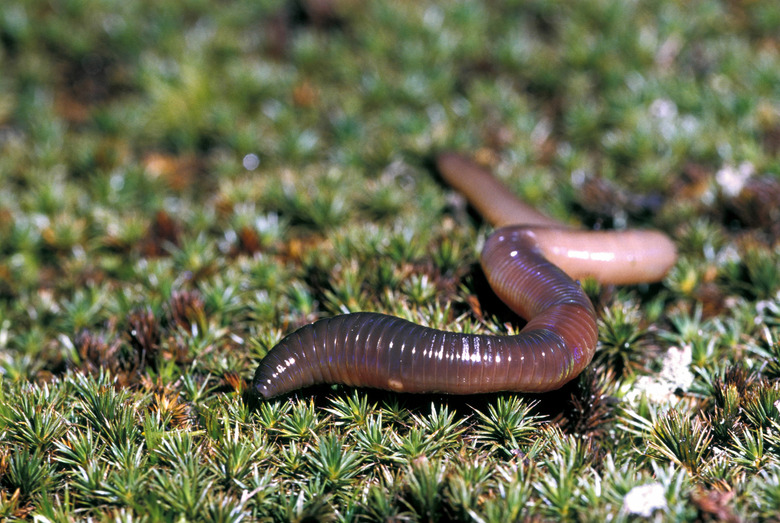How Do Earthworms Move?
If you have no arms, no hands and no legs, how do you dig underground? No, it's not a riddle! With no arms, legs or other appendages, 'How do earthworms move?' is a valid question. You've seen them in the soil of your garden or wriggling haphazardly across the pavement after heavy rain, but have you ever put much thought into the locomotion of an earthworm?
Anatomy: Earthworm Body Parts
Anatomy: Earthworm Body Parts
Your standard garden earthworm is made up of between 100 and 150 round segments. Each of those segments contains layers of muscles, blood vessels, nerves and internal organs. Those segments also feature paired setae, small bristles on the exterior of the earthworm.
These invertebrates have two types of muscles: longitudinal muscles and circular muscles. The longitudinal muscles run along the length of the worm, while the circular muscles go around the worm perpendicularly.
How Do Earthworms Move?
How Do Earthworms Move?
The aforementioned muscles and setae both factor into the mechanism of locomotion in earthworms. The worm uses the setae to help anchor part of its body in place, while the muscles move the body forward or backward from that location.
Imagine you're laying in a tunnel, you might wiggle and 'worm' about as much as you'd like, but you aren't doing much moving unless you use your arms or legs. However, if you push your feet against the wall, you can use the muscles in your body to propel yourself forward by bracing against your feet. In this example, your feet work similarly to the setae of the earthworm.
While their setae help hold them in place, the muscles beneath their skin help propel them forward or back. They simultaneously relax their longitudinal muscles and contract their circular muscles, lengthening their body and pushing it forward.
How Do Earthworms Move Through Soil?
How Do Earthworms Move Through Soil?
However, worms do not dig through soil via tunnels already created for them. So how does a creature without any bones push itself through the ground? Exactly how do earthworms move through soil? Dirt is packed together pretty tightly, so how exactly do these creatures avoid being crushed? The answer lies in the earthworm's skeleton 'replacement.'
Earthworms have what scientists call a hydrostatic skeleton. This means that in place of a true skeleton, worms have fluid-filled bodies. This fluid helps maintain the worm's shape, even when under the pressure of the soil underground.
Locomotion of an Earthworm: The Final Picture
Locomotion of an Earthworm: The Final Picture
For an earthworm to actually press itself through the soil, they must combine several of these elements at one time. Earthworm motion involves utilizing each segment's muscles individually. The worm expands part of its body, using a combination of hydrostatic pressure and its setae to hold that section in place against the soil. Then, it tightens and lengthens the muscles of the next section to force itself forward through the soil. It can also use the opposite to push itself backward if necessary.
To further help the earthworm move through the soil safely, they have a hardened, slightly pointed area on their head. This helps the worm force its head through the earth and open even the smallest cracks in the soil. The tunnels that earthworms create don't just serve them either! By creating tunnels, earthworms help introduce more air into the soil, a process known as aeration. This helps plant roots absorb additional nutrients.
In addition to soil aeration, earthworms also leave behind droppings in the soil that they dig through. These droppings contain nutrients from the decayed organic matter the worms eat. The digestion process turns these nutrients into a form useable by plants, thus aiding the rest of the food web above the ground.
Cite This Article
MLA
Zinni, Yasmin. "How Do Earthworms Move?" sciencing.com, https://www.sciencing.com/how-do-earthworms-move-13406972/. 30 September 2021.
APA
Zinni, Yasmin. (2021, September 30). How Do Earthworms Move?. sciencing.com. Retrieved from https://www.sciencing.com/how-do-earthworms-move-13406972/
Chicago
Zinni, Yasmin. How Do Earthworms Move? last modified March 24, 2022. https://www.sciencing.com/how-do-earthworms-move-13406972/
